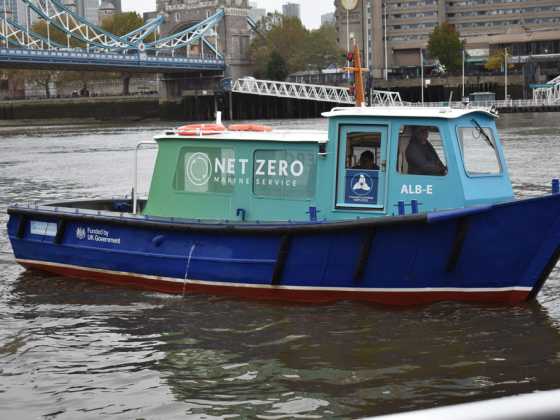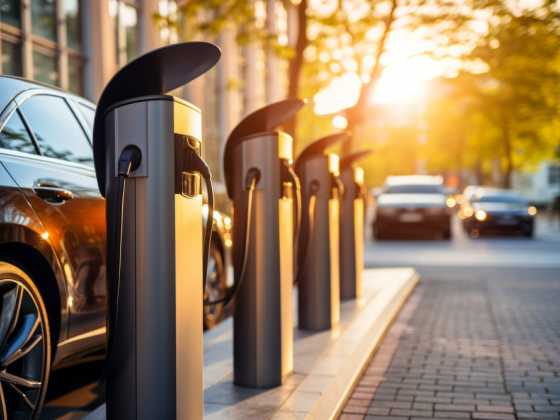Stepping up to improve air quality

While we wait for the government to finalise its air quality plans, there are a number of encouraging examples of public sector organisations tackling air pollution in their areas. ClientEarth’s Dominic Phinn shares some examples
The fight for clean air in 2018 has been pretty remarkable so far. ClientEarth has led the fight for tough action on air quality for almost ten years, defending people’s right to breathe clean air in the UK and in major cities across Europe – and things are beginning to change.
The UK is under the cosh on air pollution not just from the High Court, but from the EU Environment Commissioner – who will announce in April whether the Commission will be taking the UK to court for consistently ignoring EU rules on air pollution. This could lead to hefty fines, and the UK government has already warned local authorities that they could face fines too if they are seen not to have taken sufficient action to tackle illegal and harmful air pollution in their areas.
Air quality catastrophe
Every month, reports of new vehicle sales confirm that demand for diesel is only going one way. For car companies this means facing up to the challenge of reorienting manufacturing towards non-polluting vehicles. Meanwhile, after years of inaction, pressure on the government to take stronger action is mounting. Last month saw the release of the findings of an unprecedented joint ‘super inquiry’ by MPs representing all major parties. The report concluded that there has been a serious lack of leadership from the government. It made several strong recommendations to address the national “air quality catastrophe”, echoing many of those called for by ClientEarth.
The report asks for a faster and more effective approach to implementing Clean Air Zones (CAZs) including mandating them where needed. It also points out that CAZs should be developed as part of a national framework, so businesses know that new vehicles they buy will be able to enter cities across the country.
The report also sets out a vision for a new Clean Air Act. This would be a welcome update to the landmark 1956 legislation, taking into account the modern day sourcesof pollution, including transport emissions.
The report agrees with ClientEarth that this new Act should ‘enshrine in law people’s right to breathe clean air’.
It also calls for a targeted scrappage scheme to help small businesses and those on low incomes move to cleaner forms of transport.
The UK government’s response to a consultation on this was published in March. Unfortunately, it contained little more than a list of possible measures, with no detail of how they could be implemented. Crucially, the government missed its chance to propose a fair scrappage scheme. It seems the buck is being passed once again to local councils.
Third clean air court victory
February saw the culmination of ClientEarth’s third successful case against the UK government over illegal and harmful air pollution. The judge’s ruling puts more pressure on government to take long overdue action to sort out the illegal levels of NO2 across the UK. In response to the court orders from our cases, the UK government is requiring 61 English local authorities to come up with plans that lay out how they will tackle air pollution in their areas. The Mayor of London and the Scottish and Welsh governments are also obliged to take action.
Final plans must aim to achieve compliance as soon as possible; choose a route to compliance which reduces human exposure as quickly as possible; and ensure that compliance with limit values is not just possible but likely. In other words, when selecting measures to tackle air quality, the determining factor must be their effectiveness, not their cost, and the measures taken must meet the legal limits in the shortest time possible.
To avoid further delay in protecting people’s health, the judge also made an ‘exceptional’ruling allowing ClientEarth to take the case straight back to court if the UK government’s supplement to its Air Quality Plan does not comply with the High Court order. While we wait for these plans to be drawn up, there are a number of encouraging examples of leadership coming from businesses and the public sector around the country.
City of London Corporation
Of all the local authorities, the City of London Corporation has some of the worst air pollution in the country – down to its location at the heart of London and the density of the buildings and traffic that surround it. Tackling the issue is a key priority and through an informed strategic approach, it has implemented a number of effective measures intended to bring pollution down.
Central to the City of London’s approach is effective engagement with businesses and residents. As one of London’s five Low Emission Neighbourhoods (LEN), it runs air pollution awareness events and works directly with businesses to tackle emissions from deliveries and freight. A rollout of electric vehicle charging infrastructure for residents is in the pipeline, along with restricted access of polluting vehicles to some of its most polluted streets, and the introduction of green taxi ranks.
Committed to protecting the health of people living and working in the City of London and with strict restrictions on polluting vehicles on the horizon with the Ultra Low Emission Zone (ULEZ), it has also taken strong steps to transform its own fleet. In 2016, the authority implemented a Corporation-wide ‘no diesel’ policy. For every new vehicle purchased the City Corporation does a business case study to make sure they choose the best-suited vehicle for the job. Oversight extends beyond their own fleet: any new contractor the city brings on board must have a fleet that meets FORS Grade Silver Requirements and complies with the CLOCS Standard for Construction Logistics.
Oxford City Council
Last year, Oxford City Council called the government out on what it considered over-optimistic modelling of its air quality problem. The city’s own air quality monitoring showed air pollution to be above legal limits in several streets in central Oxford. Based on this local data, the city council – in partnership with Oxfordshire County Council – proposed the world’s first Zero Emission Zone in Oxford city centre. They also installed vehicle charging points in residential streets using £800,000 of funding from the Office for Low Emission Vehicles (OLEV).
Yorkshire Ambulance Service
Yorkshire Ambulance Service Trust currently operates a fleet that travels over 50 million kilometres per year. The service has set itself the ambition of reducing emissions as much as possible over the next few years. Their latest commitment is adopting hydrogen-electric vehicles as part of their support services. The service is also working with low-emission vehicle company ULEMCo to build a prototype hydrogen-electric ambulance, which will have zero emissions at tailpipe. This is the latest in many projects that the service has taken on to reduce pollution, including installing solar panels on more than 100 ambulances to keep their batteries charged.
UPS
We know polluting vehicles are likely to have restricted access to many urban areas and so reducing emissions is now a central priority for all organisations with large fleets. One of the biggest challenges when considering the shift to electric is providing on-site charging capability that will support significant take-up of electric vehicles.
March saw the launch of a groundbreaking project from UPS: it now has the charging capacity to switch its entire central London delivery fleet to run on electricity. Of the 170 vehicles, 52 are already EVs and UPS will transition the remainder from diesel to electric over the next few years.
The charging system, delivered together with UK Power Networks and Cross River Partnership, and with financial support from the OLEV, uses a smart grid and on-site battery storage to provide an “intelligent approach” to vehicle charging. It is spread through the night so that electricity use
in the building from lighting, machinery and IT is unaffected but a conventional expensive supply upgrade is not needed.
UPS is showing that a scaled-up approach to electric fleets is possible, paving the way for other organisations to transition away from diesel commercial vehicles.
What’s next?
It is encouraging to see leadership coming from the private sector and local authorities. However, the air quality problem can only be solved with strong national leadership and funding. ClientEarth is committed to ensuring that the UK government delivers on its duty to meet legal limits of air pollution in the shortest time possible – ideally going beyond this to ensure the
best outcome for people’s health.
We continue to urge the government to provide more financial support, with contributions from carmakers to help progressive businesses switch to cleaner vehicles. We want to see further reforms to Vehicle Excise Duty and company car tax to incentivise take up of cleaner vehicles.
Meanwhile, Clean Air Zones will soon be in place across the country. They of course need to take into account local conditions but have to be developed within a national framework so businesses know that the fleet they invest in will be able to enter cities across the country.
If you work for a local authority and want to share your insights about what you need to tackle illegal and dangerous air pollution in your areas then do get in touch at: dphinn@clientearth.org






